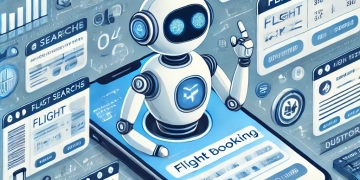Data Analysis for Sales and Revenue: Unlocking Insights with Python
Introduction
In the competitive world of business, understanding sales and revenue trends is crucial for making informed decisions. Data analysis provides valuable insights that can help businesses optimize their strategies, increase profits, and improve customer satisfaction. In this article, we will explore how to perform a data analysis for sales and revenue using Python, leveraging a hypothetical dataset.

Hypothetical Dataset
Let’s assume we have a dataset named sales_data.csv with the following columns:
- Date: The date of the transaction.
- Product_ID: The unique identifier for each product.
- Product_Category: The category to which the product belongs.
- Units_Sold: The number of units sold for each transaction.
- Unit_Price: The price per unit of the product.
- Revenue: The total revenue generated from the transaction (Units_Sold * Unit_Price).
- Cost: The total cost of the products sold.
- Profit: The profit generated from the transaction (Revenue – Cost).
Here’s an example of what the data might look like:
| Date | Product_ID | Product_Category | Units_Sold | Unit_Price | Revenue | Cost | Profit |
|---|---|---|---|---|---|---|---|
| 2024-01-01 | 1001 | Electronics | 10 | 100.00 | 1000.00 | 700.00 | 300.00 |
| 2024-01-02 | 1002 | Apparel | 20 | 50.00 | 1000.00 | 600.00 | 400.00 |
| 2024-01-03 | 1003 | Electronics | 5 | 200.00 | 1000.00 | 800.00 | 200.00 |
Analyzing the Data with Python
Let’s dive into the analysis using Python. We will cover some basic analysis like total sales, revenue, profit trends, and category-wise performance.
Step 1: Importing the Required Libraries
import pandas as pd
import matplotlib.pyplot as plt
# Loading the dataset
data = pd.read_csv('sales_data.csv')Step 2: Exploring the Data
Before we perform any analysis, it’s important to understand the structure of our dataset.
# Display the first few rows of the dataset
print(data.head())
# Check for missing values
print(data.isnull().sum())Step 3: Total Sales and Revenue Over Time
We can analyze how sales and revenue have changed over time.
# Convert 'Date' to datetime format
data['Date'] = pd.to_datetime(data['Date'])
# Group by date to get daily totals
daily_sales = data.groupby('Date').agg({'Units_Sold': 'sum', 'Revenue': 'sum', 'Profit': 'sum'}).reset_index()
# Plotting sales and revenue over time
plt.figure(figsize=(14, 7))
plt.plot(daily_sales['Date'], daily_sales['Units_Sold'], label='Units Sold')
plt.plot(daily_sales['Date'], daily_sales['Revenue'], label='Revenue')
plt.plot(daily_sales['Date'], daily_sales['Profit'], label='Profit')
plt.title('Daily Sales, Revenue, and Profit Over Time')
plt.xlabel('Date')
plt.ylabel('Amount')
plt.legend()
plt.show()Step 4: Analyzing Product Category Performance
We can analyze which product categories are performing well in terms of sales and profitability.
# Group by Product_Category to get category-wise totals
category_performance = data.groupby('Product_Category').agg({
'Units_Sold': 'sum',
'Revenue': 'sum',
'Profit': 'sum'
}).reset_index()
# Plotting category-wise performance
plt.figure(figsize=(10, 5))
plt.bar(category_performance['Product_Category'], category_performance['Revenue'], label='Revenue')
plt.bar(category_performance['Product_Category'], category_performance['Profit'], label='Profit', alpha=0.7)
plt.title('Revenue and Profit by Product Category')
plt.xlabel('Product Category')
plt.ylabel('Amount')
plt.legend()
plt.show()
# Displaying the category performance
print(category_performance)Step 5: Profit Margin Analysis
Let’s calculate and analyze the profit margin for each product category.
# Calculate profit margin
data['Profit_Margin'] = (data['Profit'] / data['Revenue']) * 100
# Group by Product_Category to get average profit margin
category_margin = data.groupby('Product_Category')['Profit_Margin'].mean().reset_index()
# Displaying the profit margins
print(category_margin)Conclusion
Through this analysis, we’ve explored how sales, revenue, and profit can be analyzed using Python. By understanding trends over time, identifying top-performing product categories, and analyzing profit margins, businesses can make data-driven decisions to optimize their operations.
This is just the beginning—advanced analyses can include customer segmentation, predictive analytics, and more. With Python, the possibilities are endless.
This article provides a foundational approach to sales and revenue analysis using Python. By leveraging similar techniques on real-world datasets, businesses can gain valuable insights to drive growth and profitability





















